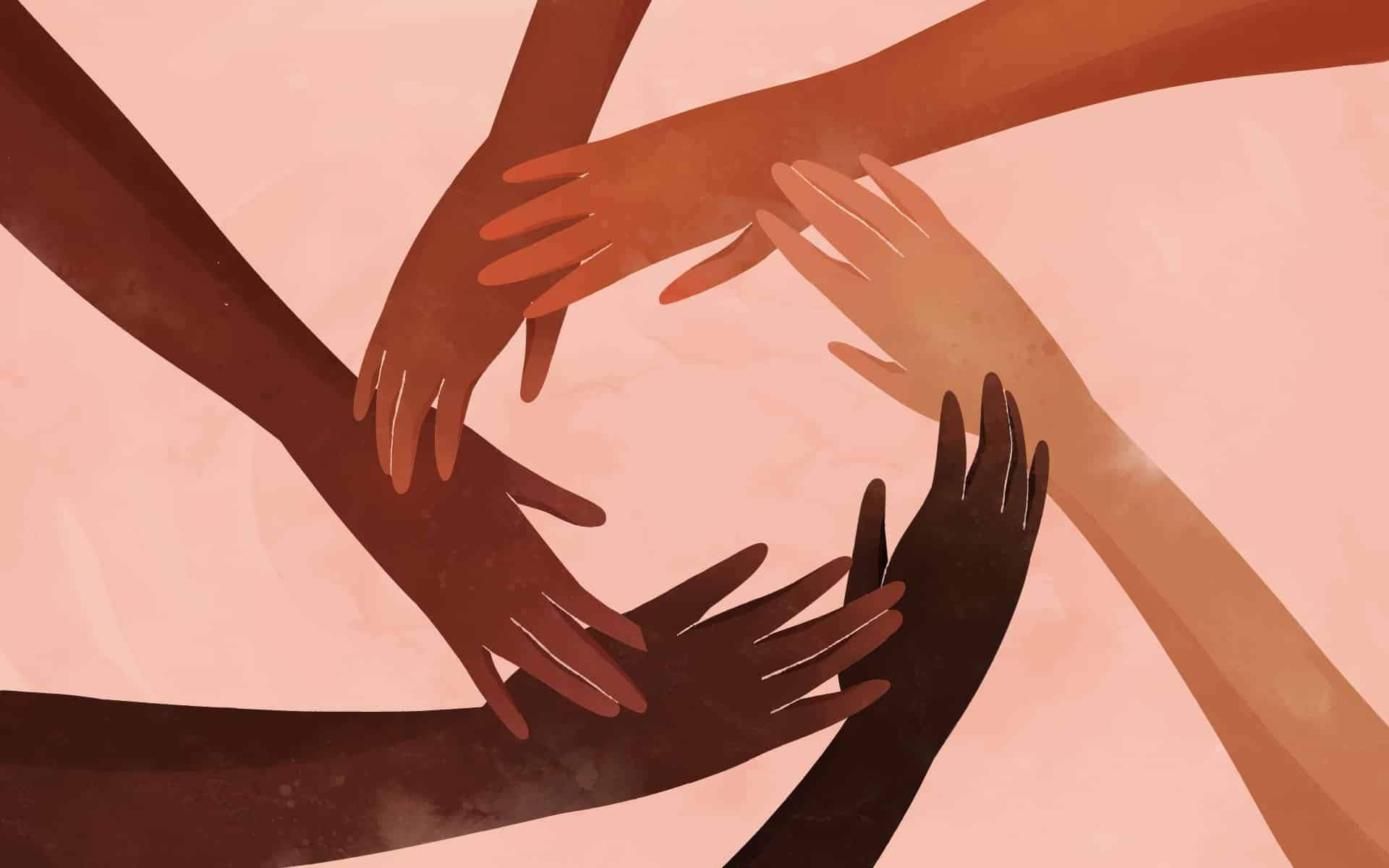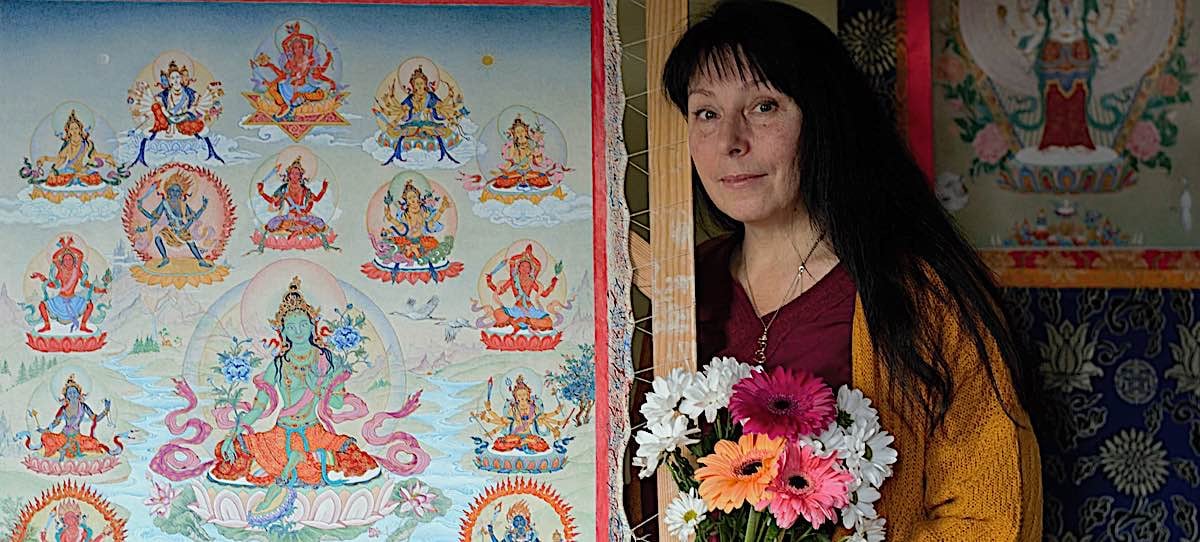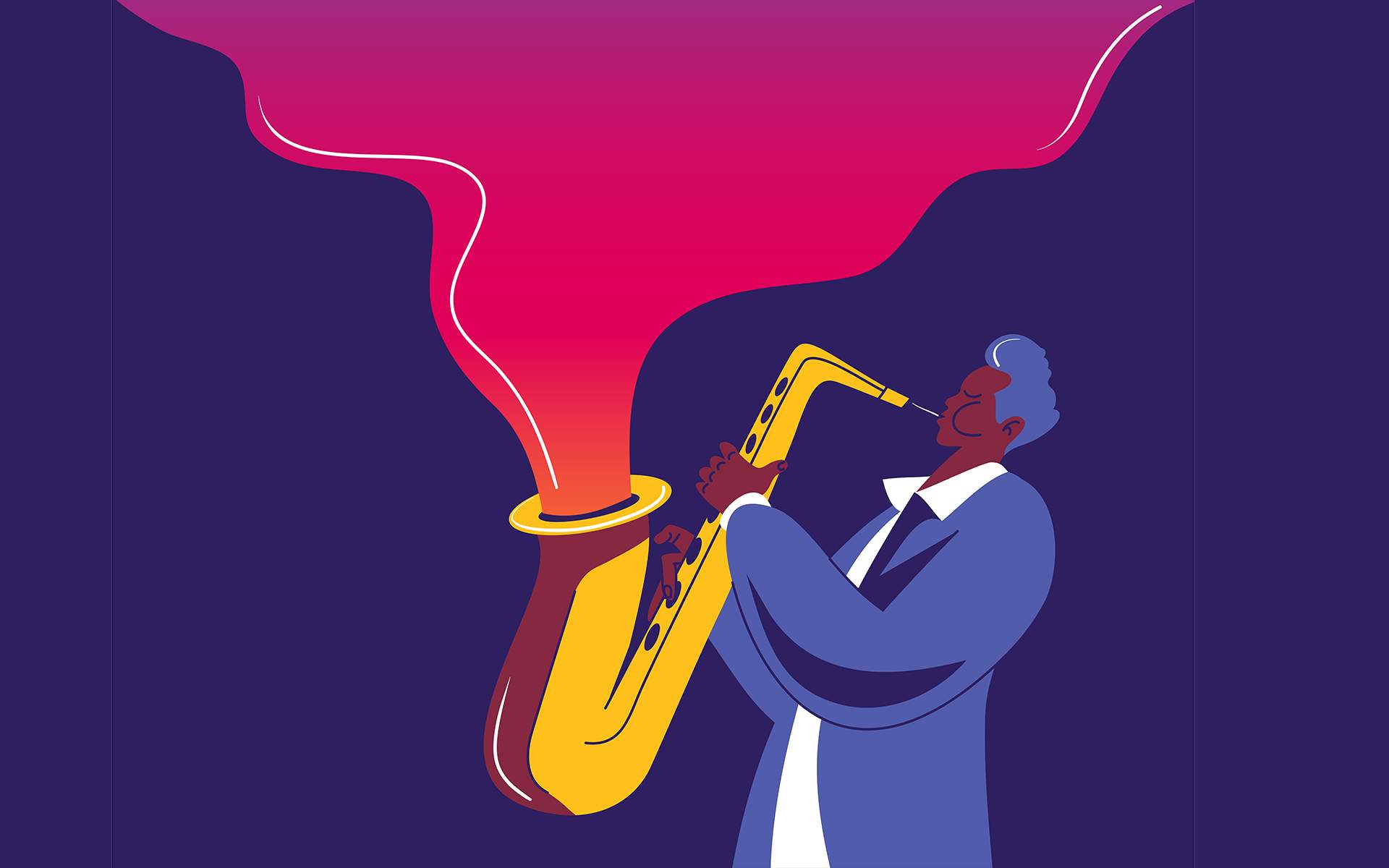Mindfulness for Racial Healing
Mindfulness can serve as the foundation for powerful conversations, transformational growth, and self-awareness when it comes to race and racism. The post Mindfulness for Racial Healing appeared first on Mindful.

A note from the Mindful editors:
Welcome to the first article of our series on mindfulness for racial healing by educator, leader, and one of the 2021 Powerful Women of the Mindfulness Movement, Tovi Scruggs-Hussein.
As the mindfulness community stands at the forefront of helping people everywhere to develop emotional intelligence, compassion, and awareness of both self and others, we hope this series will result in opportunities for reflection, unlearning, and vulnerability to nurture cultural humility and heal.
We are all affected by the divisiveness that currently defines our socio-political environment. This series is an invitation to explore difficult topics with the love and compassion needed for deep, systemic change.
Here’s what you can expect:
Monthly articles featuring mindfulness-based tools for exploring the topics of race and racism, including: the neuroscience of white fragility, how shame limits our growth and ability to have conversations about race and racism, the nature of bias, and the true harm of what we often call microaggressions. Guided meditations to help you bring insights into practice and then out into the world Reflection prompts that accompany each article so you can integrate the work Monthly Q&A opportunities. Simply send your questions to [email protected] and we may include them in a future Q&A article with Tovi’s response.How Racism Harms Everyone
Since the May 2020 killing of George Floyd and the racial reckoning/awakening that ensued, there’s been no shortage of proposed solutions to the problems of race and racism in the United States.
My approach takes the long view by centering the emotional nature of our racialized experience that perpetuates systemic racism in our mainstream culture, and calls for comprehensive healing for people of all races. My unique approach to racial healing and my Racial Healing Allies program, as it exists today, was born almost two decades ago.
At the beginning of my nearly 30 years of transformational leadership, encouraging and empowering positive change in schools throughout California, I developed a robust meditation practice. Over time, I wrestled with making the bold assertion that even the members of the dominant culture suffer when our institutions and systems operate so inequitably based on race. At our core, we thrive in states of connection to both self and others. We are born in a state of open-connection to others, free of the -isms that we come to learn. As we grow in socialized constructs such as race, we are taught to create disconnection, even when the disconnection does not serve us.
At our core, we thrive in states of connection to both self and others.
Let me use education as an example. Our educational system in the U.S has a teaching demographic that is approximately 80% white, middle-class and the students are often over 50% non-middle class and non-white. There is a high rate of under-performance in academics by non-white students that has been documented for over half a century. Looking at this data, and the structure of the school system, we can see that students consistently change classrooms from year-to-year as they progress through the education system, while the teachers remain in their same jobs for decades, and the disparity between the demographic makeup of the two groups has stayed the same. The underperformance of non-white students is consistent throughout decades of data captured and reflects a cultural-disconnect, rooted in cultural and racial bias.
When we shift our perspective on the data to focus on the teachers, instead of the students, we see that it’s more likely that white teachers are underprepared for teaching demographic groups that are different from them. Further research shows that many white teachers are showing up to teach with unexamined racial biases, which in turn leads to misunderstanding and lower expectations of their non-white students. This disconnect is a likely cause of non-white students in the US school system underperforming on tests. All of this leads us to ask the question: If teachers’ education included examining and dismantling their biases and training for teaching young people who come from different backgrounds and life experiences from them, would we see better results? Probably so.
Please know there’s nothing wrong with the fact that our country’s teaching core is mostly white, middle-class women; what’s wrong is that we tend to look at achievement data from a lens directed at the student rather than the adult. The adult is the consistent variable for the last five decades, not the students (they change from year to year while the data does not).
If adults—in any sector—particularly from the dominant culture, engaged in racial healing work and cultural-responsiveness, there would be a foundation of learning and understanding regarding a bridge of cultural connection rather than disconnection.
So, as we explore this beyond education and apply it to all of us in every sector, how does this relate to the dominant culture also being harmed by racism? The dominant culture may be loving, caring, and service-oriented, yet their well-intentioned efforts are yielding dismal results. For teachers, this can result in feelings of futility and low self-worth. These feelings of futility correlate to poor job satisfaction and feelings of low-esteem. At the same time, these same feelings are felt by the students who are being under-served. If adults—in any sector—particularly from the dominant culture, engaged in racial healing work and cultural-responsiveness, there would be a foundation of learning and understanding regarding a bridge of cultural connection rather than disconnection. This bridge of connection would lead to greater outcomes for all involved.
6 Key Elements of Racial Healing
1. Meditation Practice
We know deep racial healing work requires settled minds and bodies. Meditation helps us settle and improves our ability to acknowledge and work with the discomfort of difficult emotions. Meditation actually activates parts of our physiology and neurobiology that facilitate long-term habit change for sustainable growth.
2. BE-ing Before DO-ing
We focus on be-ing before do-ing. In other words, center the “why and how” before the “what and when.” Every one of us can create meaningful, sustainable change when we approach healing from the inside-out. It’s imperative to “go slow to go fast.” It takes time, intention, and effort to learn new and un-learn old ways of being. This learning process requires us to surrender what we think we know in order to form a new awareness about race and racism in our own lives. It asks us to examine our personal biases and face some uncomfortable truths.
This connection, in truth, is a re-connection. Racism can only exist and thrive in an environment of disconnection.
It’s important to understand the transformational nature of this approach as it relates to our common humanity. Transformation requires time and a willingness to change, even when it is uncomfortable. And racial healing work is uncomfortable. This approach cultivates and enhances our racial stamina—our ability to work the muscle of discomfort to stay leaned-in, present, and engaged in difficult conversations and reflections about race—and our roles and contributions to systemic racism. This leads to greater connection to self (first) and greater connection to others (second). Our self-transformation facilitates relational and then systemic transformation. This connection, in truth, is a re-connection. Racism can only exist and thrive in an environment of disconnection. Systemic oppression in all its forms relies on disconnection to exist. My approach is grounded in outcomes to shift ways of BE-ing, so that over time, we become ready to take actionable steps (DO-ing) to heal our racially chaotic world. We don’t “do” first, we “be” first.
3. The Problem is Systemic
Racism is a systemic problem, and racial healing must happen systemically. This requires us to explore how racism operates through each of us, both individually and collectively, at all levels of our society. Deep self-awareness comes from recognizing the systemic parts of racism we’ve contributed to. When this happens, we’re often engulfed in powerful new waves of compassion that can help us intuitively recognize shifts we can be a part of in our own micro-systems.
4. Healing Happens Together
Learning often looks very different across racial groups, but my team and I have seen that growth is accelerated when people of all races learn the importance of coming together to heal. This may come with the experience of discomfort and sometimes dissonance, but opening ourselves up to these opportunities are critical to increase racial stamina and our ability to manage the physiology of complex emotions and discomfort. We develop the strength to refrain from alienation, agree not to vilify any group of people, and work with compassion and non-judgement as non-negotiable principles of everything we do. Of course, affinity spaces also have great value and are aligned to compliment the work of inclusive, mixed-race spaces for added depth and support in racial healing.
5. Acknowledge Trauma and Take Care
Parts of this work, especially for BIPOC, can be re-traumatizing in the context of an already traumatizing experience in the world. For white people, the experience can be deeply uncomfortable as they awaken to the depth of the disconnection they’ve orchestrated—often unconsciously throughout their lives—and that this disconnection has been systematically intentional (even at their own expense).
Racism has become a double-edged sword for our society. Acknowledging the trauma, along with providing healing strategies (inclusive of meditation) is part of what makes these racial healing spaces so powerful. For instance, you may engage in the sacred pause of a deep breath to recalibrate your connection to the present-moment. Another supportive healing strategy is journaling, bringing awareness to processing your feelings. Being mindful to rest and slow down, giving yourself space to work through whatever is arising can help us take care of ourselves while maintaining our capacity to keep going.
6. Compassion and Self-Compassion
Compassion and self-compassion are necessary skills for unlearning systemic racism and cultivating the ability to lead with love. As we engage in the rigorous and often challenging work of racial healing, we stay rooted to the intention to alleviate suffering for all people and ourselves, staying rooted and connected to love for common, shared humanity.
The intentionality of leading with love helps us to stay loving with ourselves and others in hard moments and is, itself, an antidote to the suffering of disconnection generated by racism. Further, anchoring to compassion and self-compassion supports us to not shrink away from our values, to be certain to keep healthy boundaries, and stay courageous with feedback and say what needs to be said in the often difficult conversations and interactions in racial healing work.
It’s important for me to explicitly state that I visioned and embarked upon the work of racial healing in mixed-race spaces on behalf of children in our educational system, and on behalf of those we collectively serve, whether it be ourselves or others. My firmly held belief is that through this work, we can all positively impact humanity so that our children and those we love will no longer need healing. This approach requires a commitment to a long-term period of self-reflection, unlearning, self-discovery, and self-mastery to be committed to an equitable and inclusive society. This commitment causes us to venture into territory where we often have no idea what it is we don’t know. Inner shifts happen, often more rapidly than we could have ever imagined, because humans are designed to care for one another in deep connection.
5 Journaling Prompts for Reflection
As you begin the journey of this article series, you may find it beneficial to use this reflection guide to unpack the information outlined in this article. As we know, issues of race and racism often dysregulate the nervous systems of those unfamiliar with talking or thinking about issues of race. I share this invitation to reflect, perhaps through journaling, as a way to make the learning more tangible and sustainable, and help us stay open and ready to experience inner-shifts.
Reflect on the kinds of Diversity, Equity, Inclusion, and Belonging (DEIB) training you have been a part of in the past. Which ones were most effective for your personal development? If you’ve not had any DEIB training, why not, yet? Consider the assertion that everyone is negatively impacted by the inequality in our society. How does that idea resonate with you? Reflect on the concept of unlearning. What things do you think you will be challenged to unlearn? Have you ever experienced any sort of surrender or aha moment as you explored issues of DEIB in your life? What happened? What does it mean to create safe mixed-race spaces? Have you ever been in one before? If so, what was your experience like? Which of the elements would be the hardest for you to feel fully invested in? Why? Which ones will come easier? Why?A Guided Meditation for Honoring Our Connection to Ourselves and Others
This racial healing meditation emphasizes interconnection, honoring our connection to self in order to honor our connection to others. Acknowledging our interconnection, we can create space for healing political polarization, racial strife, and really any kind of disconnection in our lives.
Dr. Martin Luther King Jr. said, “I can never be what I ought to be until you are what you ought to be.” This is the interrelated structure of reality. Let us just be with that for a moment. This is such an interconnected reliance. Many people feel like the answer to a more equitable and inclusive society is to be kind and treat everyone the same. As you consider your own journey of racial healing and interconnection, hopefully you come to realize kindness and awareness are important, but not enough. There is inner work that is essential.
The journey of racial healing gently opens your eyes to the initial work, the work of self transformation as key to becoming a culturally inclusive and connected person. In our time together today, we begin to take the first steps to embracing interconnection.
I invite you to sit comfortably yet with reverent alertness, lengthening the spine if you choose. The body is not trying too hard. We’re just sitting like a majestic mountain. A formed presence, but not working hard at it. I invite you to gaze down or close your eyes. And now I like to give this signal to my body and mind. Now that I’ve settled in, I’m about to do this. What we’re about to open up to is more of ourselves in this moment, with full curiosity, non-judgment, and deep self-compassion. I do this by taking three deep breaths. Please take three deep breaths at a pace that feels good for you. And then just settle into breathing at a pace that feels good and supportive. Finding your own rhythm of your in-breaths and your out-breaths. Let us just be here for about one minute of silence, staying anchored and aware of our breath. Now, I invite you to imagine a world where every being is connected to love. And because of this connection, not a single being would ever hurt another. And let us recognize that this world begins with us. With our willingness to connect and see, recognize value, and honor our interconnection. Continue to imagine for a moment what it would be like to live in a world where everyone freely and equally shared a deep connection to one another. Let us begin to create this, starting with ourselves. Let us just take a moment to continue to anchor to our own breath and the imagining of a world where we are connected to everyone. And now I invite you to picture someone who is racially different than you. And we know that race is a socialized construct, yet it is also one that we are working to heal from. So imagine someone who was racially different than you. Whether you feel connected to this person or not, whether you know them personally or not. Just picture someone who is racially different than you. And as you picture them, I invite you to repeat these words to yourself, silently or out loud, whichever feels comfortable to you. These phrases are inspired by fellow meditator Melanie Cerdan. We will have some moments of silence in between the phrases, to allow the feelings to settle into our consciousness and our bodies. And let’s just take a moment. Connecting with this person who we’re visualizing. We offer the phrases: “I am open to connect with you. And I am grateful for your openness to connect with me. May the love in me connect with the love in you. I am present and I honor your presence. I am light and I honor your light. I am a unique human being and I honor that you are a unique human being. I am grateful and I honor that you are grateful.” Thank this person for exchanging this connection with you. Notice how you’re feeling in this moment. What emotions are present? What does it feel like in your body to have connected in this way? Just noticing. Not marking any feelings, emotions, thoughts as right or wrong, just simply being in the open awareness of what is present for you in this moment. As we close, let us anchor to a powerful quote by Dr. Harriet Lerner. “Only through our connectedness to others can we really know and enhance the self. And only through working on the self can we begin to enhance our connectedness to others.” May we see all others as being happy and connected. As we send this wish out into the world, may we appreciate it coming back to us. I invite you to bring your attention back into your body. Back into your current location. Bringing our full awareness to being interconnected. May we move about being connected to others and every living being. Thank you for practicing with me today.
 UsenB
UsenB 































